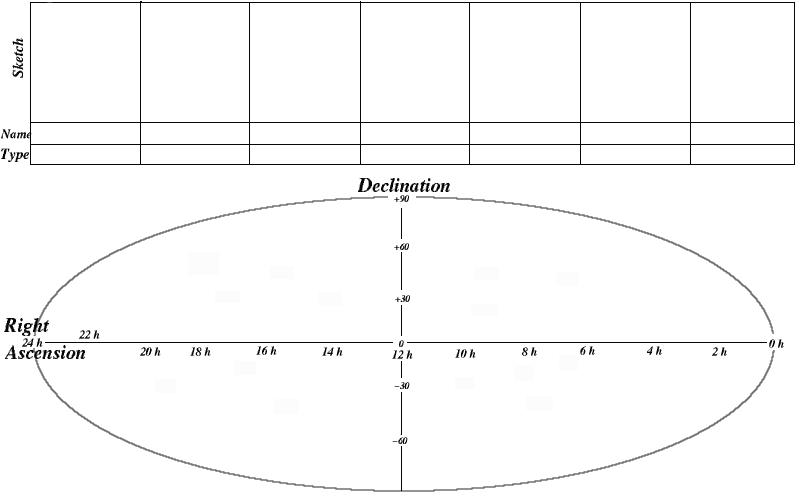NGC stands for New General Catalogue - now 100 years old - of extended objects.
Right Ascension and Declination are the coordinates of the sky, much like longitude and latitude on Earth
Apparent Magnitude is an indication of how bright an object appears to be. Apparent Magnitude runs backwards so that low numbers are brighter objects (the Sun has apparent magnitude = -26) and high numbers are fainter objects.
One degree is 60 arcminutes (60'). The Sun and the moon are 30' in angular size.
1 pc = one parsec = 3.26 light years = 2X1013 miles. The nearest star is 1.3 pc away.
